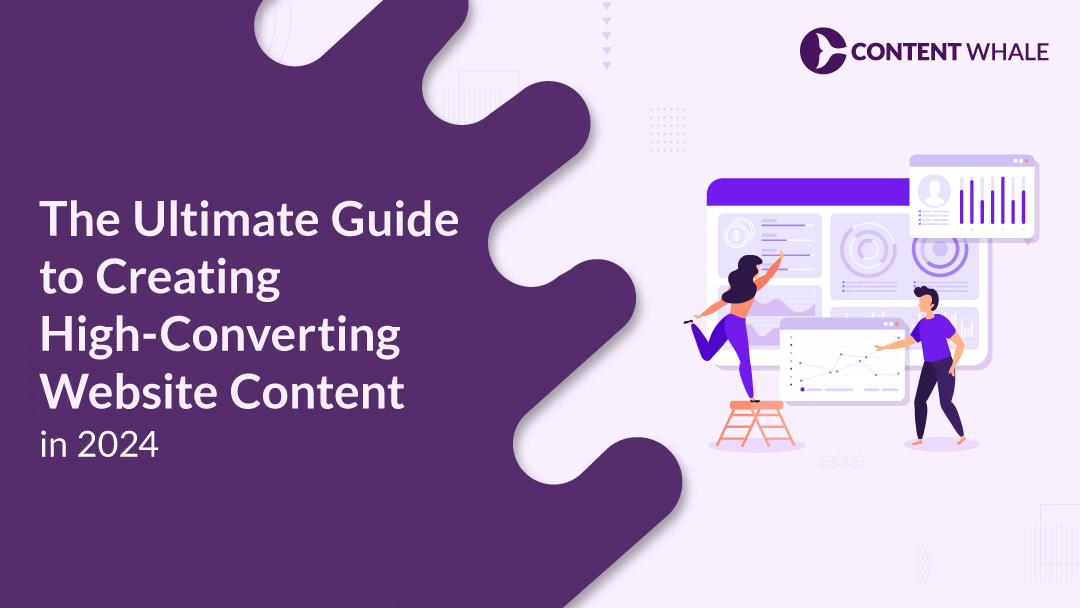Quick Summary
Discover 7 actionable steps to beat competition and divert traffic to your website. Learn how to increase traffic effectively through proven SEO strategies and outperform competitors. Get practical tips to enhance your online presence and drive more visitors to your site.
Achieving visibility and driving traffic to your website is a significant challenge in today’s digital environment.
Diverting traffic to your website is essential for business growth and success.
This blog provides 7 actionable steps to help you beat competition and divert traffic to your website.
Implementing these steps will help you increase website traffic through effective SEO strategies and outperform competitors. From conducting market research to leveraging social media marketing, each step is designed to give you a competitive edge.
By the end of this blog, you’ll have a clear understanding of the strategies needed to boost your website traffic and stay ahead in the digital game.
1. Conduct Comprehensive Market Research

Understanding your market and competitors is the first step to beat competition and divert traffic to your website. Here’s how you can do it effectively:
- Use Tools: Utilize tools like SEMrush, Ahrefs, and Google Analytics to gather data on competitors’ strategies.
- Identify Key Metrics: These tools help identify keywords your competitors rank for, their backlink sources, and content performance.
- Analyze Data: Analyze this data to spot gaps and opportunities in the market.
- Focus on Weaknesses: Tailor your strategy to capitalize on areas where your competitors are lacking.
- Stay Updated: Keep up with market trends and consumer behavior to gain insights into potential content topics and SEO tactics.
By conducting thorough market research, you can increase website traffic and outperform competitors, ensuring your strategy is always a step ahead.
2. Optimize Your Website for SEO

Optimizing your website for SEO is fundamental to beat competition and divert traffic to your website. Here are the latest practices to consider:
On-Page SEO:
- Keyword Optimization: Research and use relevant keywords that your audience is searching for. Incorporate these into your titles, headers, and content.
- Meta Tags: Ensure your meta titles and descriptions are compelling and include primary keywords. This helps improve click-through rates.
- Content Quality: Create valuable, informative, and engaging content that addresses user intent. Google rewards high-quality content that provides a satisfying user experience.
Technical SEO:
- Core Web Vitals: Focus on metrics like Largest Contentful Paint (LCP), First Input Delay (FID), and Cumulative Layout Shift (CLS) to improve page performance and user experience.
- Mobile Optimization: Ensure your website is mobile-friendly, as Google uses mobile-first indexing. A site that performs well on mobile devices will rank higher.
Off-Page SEO:
- Backlinks: Acquire high-quality backlinks from reputable sites to boost your domain authority and search rankings. Use strategies like guest posting and influencer outreach to build your backlink profile.
By implementing these SEO strategies, you can significantly increase website traffic and outperform competitors.
3. Create High-Quality, Engaging Content

Creating high-quality, engaging content is essential to beat competition and divert traffic to your website. Here are some updated best practices:
1. Short-Form Video:
Short-form videos, such as those on TikTok and Instagram Reels, are highly effective. These videos engage users quickly and can significantly increase website traffic. Incorporate short-form videos into your content strategy to capture attention and drive engagement.
2. Relatable and Value-Driven Content:
Focus on creating content that reflects your brand’s values and resonates with your audience. Consumers today seek brands that align with their values, such as sustainability and community service. Ensure your content addresses these aspects to build a stronger connection with your audience.
3. Interactive Elements:
Incorporate interactive elements like quizzes, polls, and surveys. These features increase engagement by encouraging users to interact with your content, thus enhancing their overall experience on your site.
4. Visuals and Storytelling:
Use visuals like images, videos, and infographics to make your content more engaging. Additionally, storytelling techniques, such as case studies and anecdotes, can make your content more relatable and memorable.
By implementing these strategies, you can create content that not only engages your audience but also helps you outperform competitors and increase website traffic.
4. Leverage Social Media Marketing

Leveraging social media is a powerful way to beat competition and divert traffic to your website. Here are the latest trends and strategies to consider:
1. Short-Form and Long-Form Video:
Short-form videos continue to dominate platforms like TikTok and Instagram Reels. These videos are highly engaging and have the highest ROI. Additionally, longer videos are making a comeback as platforms increase their maximum video lengths, allowing for more in-depth content that answers user questions thoroughly. Both formats can significantly increase website traffic by keeping your audience engaged.
2. Social Commerce:
Social commerce is growing, with more platforms integrating shopping features directly into their apps. Shoppable posts and live-stream shopping events can drive traffic to your site and boost conversions. Utilizing these features can help you outperform competitors by providing a seamless shopping experience.
3. Influencer Marketing:
Collaborating with influencers, especially micro-influencers, can amplify your reach. Influencers with dedicated followers can create authentic, engaging content that resonates with their audience, helping to drive traffic to your website and enhance your brand’s credibility.
By incorporating these strategies, you can effectively leverage social media to boost your online presence and divert traffic to your website.
5. Build Strong Backlinks

Building strong backlinks is crucial to beat competition and divert traffic to your website. Here are some effective strategies:
1. Guest Posting:
Publish high-quality content on reputable websites in your niche. This not only earns you valuable backlinks but also helps you reach a wider audience. Ensure the content is relevant and provides value to the readers to maximize engagement and backlink quality.
2. Broken Link Building:
Identify broken links on relevant websites using tools like Check My Links or Site Audit tools. Offer your content as a replacement for the broken link. This approach helps you gain backlinks from authoritative sites, improving your SEO.
3. Creating Valuable Content:
Content such as infographics, original research, and in-depth guides are highly linkable. These types of content attract backlinks naturally as other websites reference your valuable data and insights.
4. Influencer Collaborations:
Partner with influencers to create and share content that includes backlinks to your website. This strategy leverages their audience and authority, driving traffic and enhancing your backlink profile.
By using these SEO strategies, you can increase website traffic and outperform competitors effectively.
6. Utilize Email Marketing

Email marketing remains a powerful tool to beat competition and divert traffic to your website. Here are the latest trends and strategies to consider:
1. Hyper-Personalization:
Personalization goes beyond using the recipient’s name. Use detailed data to customize emails for each user, incorporating dynamic content that adapts to their behavior and preferences. This can include birthday emails with unique discount codes or reminders about abandoned cart items, enhancing user engagement and driving traffic back to your site.
2. AI and Automation:
Leverage AI to streamline your email campaigns. AI can help predict effective subject lines, clean up mailing lists, and automate personalized emails based on user actions, such as cart abandonment or low engagement. This increases efficiency and ensures timely, relevant communication.
3. Interactive Emails:
Incorporate interactive elements like polls, quizzes, and carousels within your emails. These features boost click-through rates by engaging users directly within the email, making the experience more interactive and enjoyable.
By utilizing these SEO strategies, you can increase website traffic and outperform competitors effectively.
7. Monitor and Analyze Your Performance

Monitoring and analyzing website performance is essential to beat competition and divert traffic to your website. Here are the latest practices:
1. Utilize Performance Monitoring Tools:
Tools like Google PageSpeed Insights, GTmetrix, and Site24x7 offer comprehensive insights into your website’s performance. These tools measure key metrics such as page load speed, uptime, and user experience across different devices and locations. They provide detailed reports and alerts, enabling you to quickly identify and fix issues.
2. Real User Monitoring (RUM):
RUM tools collect data from actual users as they interact with your site. This method provides valuable insights into how real users experience your site, helping you understand and optimize user experience. It tracks metrics like load times, user behavior, and session details.
3. Synthetic Monitoring:
This proactive approach involves simulating user interactions to detect and address potential issues before they impact actual users. It helps in identifying performance bottlenecks and optimizing conversion paths.
By implementing these SEO strategies, you can increase website traffic and outperform competitors effectively.

To sum up, implementing these 7 steps will help you beat competition and divert traffic to your website.
By conducting comprehensive market research, optimizing for SEO, creating high-quality content, leveraging social media, building strong backlinks, utilizing email marketing, and monitoring performance, you can significantly increase website traffic and outperform competitors.
For professional assistance in creating SEO-optimized and engaging content, consider reaching out to Content Whale. Our expertise can help you implement these strategies effectively and boost your online presence.
Contact us today to start enhancing your digital marketing efforts and driving more traffic to your site.
FAQs
1. What tools can help me conduct market research effectively?
Tools like SEMrush, Ahrefs, and Google Analytics are invaluable for conducting comprehensive market research. These platforms provide insights into competitor strategies, keyword rankings, and market trends. Utilizing these tools helps you better understand your market, identify gaps, and tailor your strategy to beat competition and divert traffic to your website.
2. How can I optimize my website for better SEO performance?
To optimize your website for SEO, focus on keyword optimization, creating high-quality content, and improving site speed. Tools like Google PageSpeed Insights and GTmetrix can help you identify and fix performance issues. Additionally, building quality backlinks and ensuring your website is mobile-friendly are key SEO strategies to increase website traffic.
3. What are the best practices for creating engaging content?
Creating engaging content involves understanding your audience and delivering value. Use a mix of formats like blogs, videos, and infographics to keep your audience engaged. Regularly update your content to keep it relevant and optimize it for SEO to ensure it reaches a wider audience, helping you outperform competitors.
4. How do I build high-quality backlinks for my website?
Building high-quality backlinks involves strategies like guest posting on reputable sites, collaborating with influencers, and creating shareable content. Tools like Ahrefs can help identify potential backlink opportunities. Quality backlinks improve your site’s authority and divert traffic to your website.
5. Why is email marketing important for driving website traffic?
Email marketing allows for personalized communication with your audience. By sending targeted emails based on user behavior and preferences, you can drive traffic back to your website. Using automation tools and personalization techniques ensures higher engagement rates and helps you increase website traffic.





